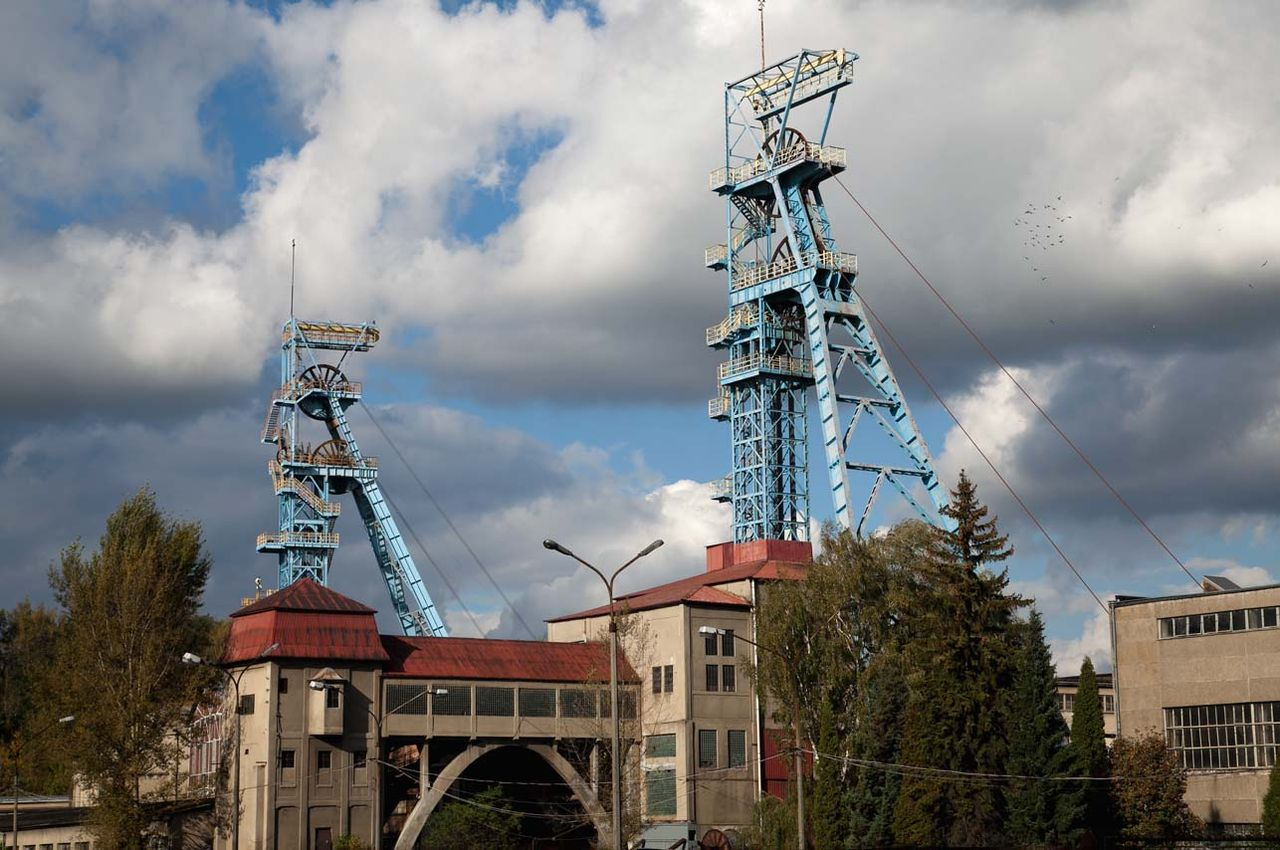What does the future hold for Polish coal? “He can still have his five minutes.”

– Coal may still have its five minutes, or more precisely, another century of further connection with the energy industry – emphasizes in an interview with Wprost, Dr. Hab. engineer Paweł Bogacz, prof. AGH. So when should you start closing down mines?
The last two years have confirmed how important energy independence is. Having our own raw materials has become more important, especially after the use of energy blackmail by the Russian Federation. Although in Poland we are dealing with the continuous development of renewable energy sources (RES) technologies, the basis is still lignite and hard coal. To be aware of the scale, you need to look at the data. Calculations by Polskie Sieci Elektroenergetyczne (PSE) show that in September 2023, hard coal (49%) and lignite (22%) dominated energy production.
Compared to last year, power plants recorded a decrease in production by approximately 13%. Those using lignite produced approximately 26%. less energy than in September 2022, and in power plants based on hard coal the drop was approximately 8%. However, production based on renewable sources has increased.
Brown and hard coal in Poland. “We still have a lot of resources.”
The wealth of our region is the basis for the still large use of these raw materials in the production of electricity in Poland. – This is a direct result of the fact that we were and still are a large reservoir of these fuels. For many decades, it has been the basic, own resource source for energy, which – apart from the prices resulting from the prices of CO2 emission allowances – is still today the cheapest industrial energy in terms of production – says Wprost, Ph.D. engineer Paweł Bogacz, prof. AGH from the Faculty of Civil Engineering and Resource Management of the AGH University of Science and Technology in Kraków.
Although some of these deposits have been exploited, a large resource base in terms of hard coal consists of the outer (mainly southern and eastern) borders of the Upper Silesian Coal Basin and the Lubelskie Coal Basin. – Also in terms of brown coal, Poland still has large resources, which are located mainly in the Legnica, Gubin and Złoczew deposits. Therefore, it is not the problem with the resource base that is the main reason for reducing the production of both these fossil fuels and, above all, the energy related to them – says Prof. Rich man.
The expert explains that the decline in production is related to the emission of greenhouse gases from the combustion of these fuels. Their share is also decreasing with the simultaneous development of renewable energy technologies. However, recent years have been not only about renewable energy sources, but also about turning over the field to natural gas. This is confirmed by PSE statistics. The data shows that in September 2023, compared to last year, gas power plants had the largest increase in energy production, which amounted to almost 14%. During the period under review, hydropower plants also produced more energy – by 9.5%.
Poland is committed to gradually abandoning the use of fossil fuels
However, we return to the emission intensity of greenhouse gases; it should be borne in mind that in the case of carbon dioxide alone, this value is 40 billion tons per year. EU countries, including Poland, aim to gradually abandon the use of fossil fuels for energy production. The use of low-emission solutions will enable the introduction of the so-called energy mix. Our country has the “Polish Energy Policy until 2040”, but the events of February 2022, i.e. the start of the war in Ukraine, affect many aspects related to energy policy. This is constantly updated and takes into account the fourth pillar – energy sovereignty, the specific element of which is to ensure the rapid independence of the national economy from imported fossil fuels from the Russian Federation.
Russia’s energy blackmail towards the European Union that accompanies the attack on Ukraine shows how important it is to have our own energy resources, as well as the technology to use them – says Dr. Hab. in an interview with Wprost. engineer Paweł Bogacz, prof. AGH.
The second reason why, colloquially speaking, coal is holding up well is the need to maintain an appropriate capacity market, which, we must openly admit, we are unable to create given the terrain of Poland as a lowland country, which does not allow the construction of appropriate energy storage facilities based on on pumped-storage power plants, as well as at today’s absolutely imperfect level of technology regarding other types of energy storage. Combined with the lack of stability of RES-based production, which in the vast majority of cases depends on weather conditions, this leaves a big challenge for the energy market in Poland – says Prof. Rich man.
The expert has no doubt that despite the development of renewable energy sources, Poland should continue to obtain coal. – Of course, the golden years of coal mining are long behind us. However, taking into account the availability of own resources, the know-how, as well as the determinants related to low direct costs, the use of coal-fired energy as a stabilizer of the energy market should be a strategic issue. With the further, extremely necessary development of energy based on renewable energy sources (mainly in the distributed aspect), but taking into account its instability shown above, the capacity market must for now be based on fossil fuels – says Wprost an expert from the AGH University of Science and Technology in Krakow.
“Nuclear energy will be an important link, but will it be enough in the foreseeable future?”
In the context of the war in Ukraine, it is worth paying attention to the economic aspect. The numbers prove that the derussification of the European energy industry has taken place. Compared to last year, Russia’s share in fuel imports in the European Union has dropped dramatically. In terms of crude oil, this is down from 23%. to approximately 2 percent, natural gas from 38.5 percent. to less than 13 percent, and coal from 45 percent. share to zero.
– Knowing that these are rare fuels which, as history has repeatedly shown and the present, can be used by those who own them to control the market or even for blackmail, such a system should be based on our fuels. These fuels are coals, both hard and brown. This model is also used by the United States and China, and India, the largest economy in the world, is also starting this path. Until effective and efficient energy storage is invented, I see no other chance for stability of the energy market, including in the aspect of RES development. Nuclear energy will be an important link in this aspect, but will it be enough in the foreseeable future? In my opinion, no, says prof. Rich man.
The Ministry of State Assets emphasizes that it does not plan to accelerate the transition away from coal. The applicable end date for hard coal exploitation in individual mines is the end of 2049. Coal is to be the transition fuel during the energy transformation. Although the era of coal is behind us, our expert draws attention to its “stabilizing role”.
If we include modern methods of deposit management (including digital maps), production automation and technologies based on underground gasification, as well as the possibility of capturing and underground storage of CO2 from combustion, then in my and not only my opinion, coal may still have its five minutes, or more precisely, another century of further connection with energy – emphasizes Prof. Rich man.
– Regardless, let’s not forget that not all hard coal is typical energy coal – adds the expert. – Type 34, 35 and 36 coals are coking coals, constituting the basis of metallurgy, being used to produce coke, which in turn makes it possible to create steel in metallurgical processes. Nearly one fourth of the coal currently exploited in Poland is made up of this type of coal, and Jastrzębska Spółka Węglowa, which produces it mainly, is the largest producer of this product in the European Union. Coals are also used in the chemical industry, agriculture, pharmaceutical industry and many other branches of the economy. The demand for this product will not fade away even if we manage to replace it in the energy sector, he points out.
Being aware of the challenges that governments face in the context of energy security, the risk of blackmail from the Russian Federation and the pursuit of climate neutrality, one should ask when the mines should be phased out. Not only economic but social aspects also remain important in this context. According to data from the Polish Academy of Sciences, shutting down coal mines in Poland may result in the loss of up to 200,000. jobs. There are also the costs of recultivation, which, according to estimates, may amount to approximately PLN 100 billion. EU countries are taking action to alleviate these obstacles. The EU Just Transition Fund finances projects for the reclamation of post-mining areas and support for people who will lose their jobs as a result of closing down mines.
How to use coal deposits? Underground gasification technologies are behind this
– From the point of view of mining art and economics, we should start closing down mines when the resources on which the mines work run out. This is also defined in quite detail in the Geological and Mining Law. From the point of view of environmental issues, the problem is not the coal itself but the way it is used, which is mainly combustion. Let’s deal with these issues first and foremost, the expert urges.
Prof. Bogacz also explains that deposits can be developed in other ways, but not in all conditions.
– Technologies that are developing quite rapidly in the world are technologies for underground gasification of deposits, in which the energy used from coal is obtained in the deposit itself, which happens as a result of complex, controlled physico-chemical processes. The deposit in which such processes are carried out must be very well barrier and have appropriate geological parameters. In Poland, the above gasification processes were successfully used in the mining fields of the former Wieczorek Coal Mine. Let’s not forget about this way of using deposits. Regardless, let us remember that a mineral deposit is a resource, so we can always, and indeed should, preserve it for future generations and uses, he adds.






